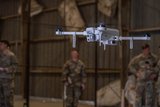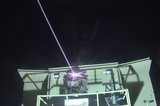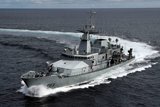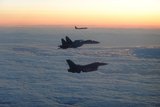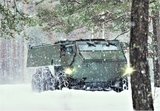USAF to merge aircraft maintenance systems
The US Air Force has elected to merge a number of similar aircraft maintenance information technology systems into a single system to be developed and maintained within the DISA Computing Ecosystem.
DISA’s Core Automated Maintenance System for Mobility (CAMS-FM) application will serve as the force’s single maintenance information system (MIS), for the management of all base level, aircraft sortie production activities.
CAMS-FM will replace IT systems including the Integrated Maintenance Data System - combat air force MIS for bombers, fighters and nuclear missiles; Reliability, Availability, Maintainability for Pods – tracks the effectiveness of pod devices that are externally mounted on a fixed wing or rotary wing aircraft, providing enhanced capabilities; and the Enhanced Maintenance Operations Center – an aircraft ramp situational tool.
CAMS-FM currently facilitates aircraft launch and recovery, and documents the status and availability of approximately 1,200 cargo and in-flight refuelling aircraft for the air force. Under this effort the air force plans to migrate approximately 5,000 additional fighter and bomber aircraft into CAMS-FM within five years.
Paul Crumbliss, deputy chief, DISA’s Computing Ecosystem, said: ‘DISA Computing Ecosystem provides software design, application development, testing and implementation of all software associated with CAMS-FM using a lightweight, agile project management framework called Scrum. This framework has been used to develop capabilities that are key to air force and US Transportation Command functions worldwide.’
This migration process will also allow the air force to standardise training requirements for field-level maintenance activities.
More from Defence Notes
-
![Elbit Systems awarded $2.3 billion contract as results soar]()
Elbit Systems awarded $2.3 billion contract as results soar
The company’s order backlog as of 30 September totalled $25.2 billion and more than a third of this is scheduled to be fulfilled before the end of 2026.
-
![Irish Naval Service expands as the country looks to defence during EU presidency]()
Irish Naval Service expands as the country looks to defence during EU presidency
The Irish Naval Service has struggled to maintain capability, particularly in the face of lucrative private sector offers luring away personnel.
-
![Resilience, adaptiveness and collaboration vital for success in space (Studio)]()
Resilience, adaptiveness and collaboration vital for success in space (Studio)
Speakers at the Defence In Space Conference (DISC) 2025 highlighted the critical and evolving role of space in national security, defence and the global economy.
-
![Why the NORAD inventory might be the US and Canada’s Achilles’ heel]()
Why the NORAD inventory might be the US and Canada’s Achilles’ heel
Both the US and Canada operate Cold War-era capabilities which cannot defeat today’s and tomorrow’s threats.
-
![Companies’ results boom as countries dig deep to buy missiles and air defence systems]()
Companies’ results boom as countries dig deep to buy missiles and air defence systems
Air defence systems are continuing to appear top of countries’ shopping lists but broadly across different capabilities it is a sellers’ market, as demonstrated by backlogs and double-digit percentage point growth.








